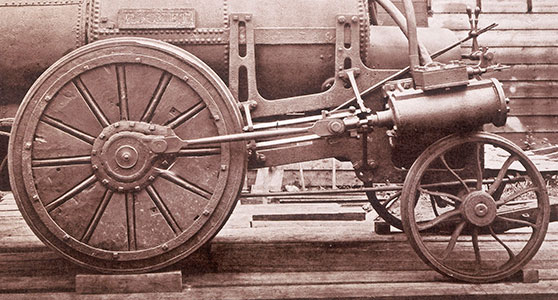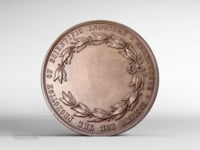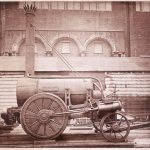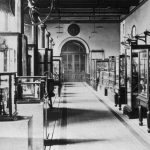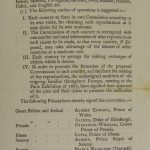Responding to stories: The 1876 Loan Collection of Scientific Apparatus and the Science Museum
Article DOI: https://dx.doi.org/10.15180/140104
Abstract
This article argues that it is useful to see historical exhibitions as both responses and contributors to narratives about science that are circulating in the public sphere. It uses the example of the 1876 Loan Collection of Scientific Apparatus (which was the immediate predecessor of the Science Museum in London). The article demonstrates how, in promoting this huge exhibition and fighting for the necessary support and resources, leading scientific, cultural and political figures engaged with two rather different public interpretations of science’s past, present and future. One dealt with science as a vigorous part of culture with a fascinating and under-appreciated past and a dynamic future coming, internationally, to the fore. The other concerned the threat to Britain’s international economic ascendancy by countries with equal ingenuity and better education that could lead Britain into a decline reminiscent of the decline and fall of the Roman Empire. According to this second narrative, science would be the vaccine that would prevent this disease afflicting Britain. In the aftermath of the exhibition, the narratives were drawn upon again to form and sustain a permanent display that was known from 1885 as the Science Museum. While the memory of the Loan Collection itself was obscured in the 1920s during the Museum’s early life as a separate administrative body fighting for resources, the author suggests that continuity can be shown in the narrative arguments used by the creators of the two projects. A greater significance should therefore be given to this exhibition in the story of the development of the Science Museum.
Keywords
discourse and museums, Henry Roscoe, Loan collection, Lyon Playfair, Norman Lockyer, Patent Office Museum, Richard Glazebrook, Royal Commission on Museums and Galleries, Royal Commission on Scientific Instruction, Science Museum, scientific apparatus, scientific instrument exhibition, Society for Scientific Industry, South Kensington Museum
Responding to stories: The 1876 Loan Collection of Scientific Apparatus and the Science Museum
https://dx.doi.org/10.15180/140104/007Museums, as keepers and narrators of stories about our heritage, may look as if they are inherently just about the past. Yet they are also dynamic institutions, participating in and responding to contemporary intellectual and social contexts. Museums’ funders, visitors and political patrons link their ideas and actions to narratives about the past, present and future, which are part of the intellectual and cultural life of the times. Such engagement with the life of the country has shaped the categories that museums employ and the selection of the artefacts they display (Bud, 1995).
The Science Museum was born out of the huge Loan Collection of Scientific Apparatus exhibited in South Kensington from May to December 1876. This was a major cultural event that was widely reviewed at the time (‘The Press on the Loan Collection’, 1876). It presented a greater number of artefacts relating to science (20,000) than are displayed today by the entire Science Museum or the Deutsches Museum, and it attracted more than a quarter of a million visitors. The permanent exhibition that followed on the west side of Exhibition Road was formally entitled the ‘Science Museum’ in 1885. Several historians have reflected upon the administrative challenges the Loan Collection faced and on its contents and publication (de Clercq, 2002a, 2002b, 2002c, 2003; Cho, 2001). Here I want to show how the process of creating both the Loan exhibition and the permanent exhibition demonstrated to the leaders of British science and to the Government’s Science and Art Department the power of the exhibition as a means of engaging with the stories about the past and future of science that were widely circulating in society.
Historians inevitably bring the sensibilities of the present to their interpretation of the past. Our experience of the 21st century can sensitise us to real historical issues that we might otherwise overlook. Today we are well aware of the challenges faced by public institutions, and perhaps particularly scientific ones. They operate in a difficult economic and political climate and have to engage not just with leading individuals but with influential interest groups, demanding funders and a raucous press. Examining the place of the museum as a story-teller negotiating many competing forms of rhetoric, with impacts on large numbers of people, may provide a fertile approach to examining how culture, society and science evolve together (Bud, 2013).
The first story addressed by the Loans exhibition celebrated science as a vigorous and increasingly significant international culture and profession, perhaps younger than the visual arts but with a glorious history of its own. After the opening of the exhibition by Queen Victoria, The Times commented, ‘The world of arts and of letters had advanced far long before science was considered to be anything more than a craze, more or less harmless. The natural consequence has been that at the present day governors and governed alike know more about, and take much more interest in, art and literature, and collections representing them, than about science.’ The promoters of the exhibition found distinguished proponents of this account from many countries, including scientists such as Britain’s Thomas Huxley and Germany’s August von Hofmann, and rulers in Germany, France, Russia and America.
The second story was profoundly national, describing science as a weapon against the threat of decline. The national anxieties of the mid-1870s that provided the context for developing the Loan exhibition were particularly intense. By coincidence, the opening took place just a few weeks after the passing of the controversial Royal Titles Bill, which had bestowed on Victoria the title ‘Empress of India’. While this title may have confirmed and assured her international hegemony, and was seen as a sign of British supremacy by many (such as Disraeli), to others the very word ’empire’ was ominous. For a classically trained nation steeped in Gibbons’ The History of the Decline and Fall of the Roman Empire,it contained within it the potential for self-destruction (Bell, 2009, p 140). The spectre of a powerful new competitor raised by the Prussian military victory over the French in 1870 resonated with unease about faltering national commercial success. The narrative of the rescuing role of science gained ground. Schools inspector and educationalist Matthew Arnold, for example, who had reported in 1869 on Schools and Universities on the Continent, reprinted the section on Germany in 1874, using language that would be repeated frequently (echoed, for instance, a generation later when King Edward VII spoke at the opening of the new Imperial College in 1907).
‘But the idea of science and systematic knowledge is wanting to our whole instruction alike, and not only to that of our business class. While this idea is getting more and more power upon the Continent, and while its application there is leading to more and considerable results, we in England, having done marvels by the rule of thumb, are still inclined to disbelieve in the paramount importance, in whatever department, of any other. And yet in Germany every one will.’ (Arnold, 1874, p 212)
In the year that Arnold’s book was published, the Foreign Secretary, the Earl of Derby, had celebrated Britain’s past success and present glory at the inaugural meeting of the Society for the Promotion of Scientific Industry (see Figure 1), but warned:
‘If we can’t produce cheaply, we shall be undersold, even in our own markets; we have to compete with countries where wages are far lower than here (who can say, looking forward how those officinae gentium [workshops of the world], India, China, and Russia, may affect the labour supply of the future?), and we cannot expect that here wages will fall much, if at all, below their present rate. We are shut up, therefore, to one of two conclusions – either we must acknowledge ourselves beaten, or we must contrive to make every day’s labour of a man more productive than it has been hitherto, by the more general, or by the more skilful use, of mechanical and chemical science.’ (Manchester Times, 1874)
This narrative about averting national decline also drew upon an established idea that more technical education (variously, if at all, defined) was needed to sustain British pre-eminence. Calls for better education had flourished in the public sphere immediately after the Great Exhibition of 1851. These had led to the formation in 1853 of the Science and Art Department, whose principal activity was a national system of examinations and teaching of science and art. However, while science had been included in those mid-century moves for education, its standing was then more a matter of convenience than commitment (Bud and Roberts, 1984). Its teaching was seen as possibly useful, and not threatening of commercial secrets (a common anxiety about more specific education), but not core to the education of even an engineer.
Thus the South Kensington Museum conceived by Prince Albert, led by Henry Cole and opened in 1857 as a legacy of the Great Exhibition, was devoted largely to design. Although it would be remembered as the administrative ancestor of the Science Museum, it contained very little that related to science per se. When The Times reviewed the Museum’s contents in 1859, the only reference made to science was in the treatment of the Library (South Kensington Museum, 1859). Moreover, Parliament’s Select Committee, which examined the Museum shortly after its foundation, expressed neither opinions nor obligation towards science (Select Committee on the South Kensington Museum, 1860).
Although such treatment might seem to us as neglect, it reflected the reality that beyond the domain of art, the South Kensington Museum included only a small and miscellaneous variety of science-related collections that had been accepted from members of the public, including the educational collection from the Society of Arts exhibition of 1854 (which did include some science artefacts), animal products, food, and building materials (Science and Art Department, 1858, pp 73-79).
Much more substantial than these miscellaneous legacy items were the displays of the Patent Office Museum, newly established in the large ‘prefab’ next door on Cromwell Road. Organised and driven by the Patent Office’s energetic leader Bennett Woodcroft, this would leave the Science Museum with some of its greatest collections. Again, however, as Christine MacLeod has shown, this museum was dedicated to the memorialising of invention rather than science (MacLeod, 2007).
Therefore, while the Great Exhibition and the establishment of the Science and Art Department were dramatic events, they did not themselves transform the position of science in public discourse. It was a decade later, at the end of the 1860s, that the narrative of science teaching as the cure for decline came to the fore. Frustrated by the marginality of science in the Science and Art Department of the 1850s, its deputy secretary – the chemist Lyon Playfair – had left for a chair in Edinburgh in 1858. However, being a politician by temperament (if not by talent), Playfair could not leave off politics. In 1867, he wrote to the head of the commission then reviewing educational policy, from the Paris Exposition. Playfair denounced the relative weakness of British presentations and blamed it on the lack of science education in Britain. A tide of public opinion and institutional movement was set underway (Gooday, 2000; Bud and Roberts, 1984). Within months a Parliamentary Select Committee, chaired by the German-born industrialist and MP Bernhard Samuelson, was sitting to investigate the parlous state of science in education. Disraeli, then Prime Minister, was supportive of moves to set up a network of science colleges, but he was unseated by a new liberal administration under Gladstone that prioritised universal elementary education. To compensate for institutional inaction and placate the powerful industrial and political pressure groups now calling for government support, the Royal Commission for Scientific Education was established in 1870. The eight reports appearing between 1871 and 1875 would be a benchmark in the State’s recognition of science in Britain.
The president of the Commission was the newly elevated Duke of Devonshire, scion of one of the oldest ruling families in the country and a man who was making huge profits from his investments in the new Barrow steelworks. The secretary was a very different kind of man. Norman Lockyer was a War Office clerk, responsible for editing the Army Regulations, and a well-respected amateur astronomer. Lockyer had recently established Nature, then just one of the many new magazines that combined aggressively expressed opinion with original science (Meadows, 2011). An active lobbyist, he took the strategic position of converting the thoughts of his distinguished Commission into words and action.
The Fourth report produced by the Royal Commission dealt with museums and culture and was published in February 1874. Having looked at the provision for natural history at the British Museum and Kew, the Commission contrasted the quite inadequate representation of the physical sciences. Certainly they were not dealt with properly in the South Kensington Museum, which Lockyer would describe in testimony to an 1889 Treasury Committee as Hamlet ‘with the part of the Prince of Denmark omitted’ (Committee appointed by Treasury to enquire into the Science Collections at South Kensington, 1889, q 853, p 55). By contrast, the Commission was impressed with what had been achieved in neighbouring France. Norman Lockyer had been asked to report on the Paris institutions and he cited in detail developments at the Conservatoire National des Arts et Métiers. Established early in the revolution, this had been radically modernised by its director, the engineer General Morin (Fontanon, 1990; Jacomy, 1995). Now it housed a collection designed to educate and inform, hosted lectures and contained a laboratory. An appendix to the Commission’s report (of course put together by Lockyer as Secretary) included a complete catalogue of the collection in Paris. The report itself recommended that a new collection of physical and mechanical instruments be established in South Kensington and that this should be combined with the Patent Office Museum’s collection.
The argument for a collection of scientific apparatus was expressed in terms of meeting demand. The critical paragraph of the recommendation reads: ‘We consider that the recent progress in these Sciences, and the daily increasing demand for knowledge concerning them, make it desirable that the National Collections should be extended in this direction, so as to meet a great Scientific Requirement which cannot be provided for in any other way’ (Royal Commission on Scientific Education, 1874, p 13). Although, therefore, the Commission had been established within the overarching context of meeting a foreign threat, the language of this particular recommendation was couched in terms of the newly emerging international culture of science. It drew upon the representation of other parts of culture.
The recommendation was turned into action through a combination of informally negotiated enthusiasms and formal steps. The diary of Henry Cole, the retiring head of the Science and Art Department, shows how conversations about a new exhibition of science were proceeding at a fast and furious pace even early in 1874. The following months must have seen much informal discussion about how these could provide an opportunity for scientific shows. From January 1875 onwards, a carefully choreographed series of moves to influence government can be followed in the archives. First, as appropriate, a suggestion was put formally to the Board of the South Kensington Museum by the Director, Philip Cunliffe-Owen, who proposed a loan collection for scientific apparatus, ‘the exhibition to include not only modern apparatus but also apparatus interesting from the persons by whom it had been employed or the discoveries in which it had been used’ (South Kensington Museum, 1875a). By mid-February 1875, a consultative meeting had been convened at the South Kensington Museum by the Lord President of the Council of Education, the Duke of Richmond (South Kensington Museum, 1874-1876, p 73).
The particular interests of the key individuals and emerging arguments about the nature of science had an impact in this process. Several of the distinguished participants in this inaugural meeting, including Thomas Huxley, John Tyndall and William Hooker, were members of the X-Club, brought together by their visions for professional science. Once angry young men, they were now at their peak as leaders of the scientific establishment and had the power to influence the fashioning of science. These men were closely associated with a rhetoric of science as culture, which would inevitably bring wealth as long as it were not constrained (Barton, 1990; and Barton, 2004).
There was a different emphasis among other participants. Whereas previously, in the Patent Office Museum, the interpretation of the development of new machines had emphasised the genius of inventions, now the development of new products was interpreted as the result of science. Sir William Siemens, who was a leader of the engineering community at the meeting, was an enthusiast for the idea of ‘applied science’, a term which had become fashionable in the contemporary development of new institutions for the training of men for industry. He was campaigning for the formation of a ‘House of Applied Science’ to accommodate all of London’s engineering institutions (Siemens, 1877). In this structure objects, such as Joule’s apparatus for measuring the mechanical equivalent of heat (still revered today as iconic in the history of thermodynamics), had a special significance since they linked science that was of truly international significance – but not of direct economic importance – to the process of invention. For men such as Siemens, the two narratives of British economic benefit and of the history of humanity were linked by the past and future of applied science.
The 1875 meeting established a first classification of what the Loan exhibition would display:
- mechanics (including pure and applied mathematics)
- physics
- chemistry (including metallurgy)
- geology, mineralogy and geography
- biology
A key part of the plan of Colonel Donnelly, Director of Science in the Department of Science and Art, who was made accountable for the project, was to recruit Lockyer (who had, after all, been the main advocate of a Loans exhibition) to take responsibility for delivery (Bud, 2009). The careful dance of recruiting him was interrupted by the unexpected difficulty of persuading the Treasury to fund Lockyer to deliver the exhibition in combination with his other commitments (which included researching solar physics, and organising the educational collections). The appointment was finally made in July 1875.
The exhibition’s inspiration and Lockyer’s campaign had drawn on nationalistic anxieties, especially the concern that Britain would not be able to compete without improving its science education, and hence its productivity. However, the use of narratives is complex and flexible and it was quite possible, and even useful, for actors to draw on different stories in different situations. In implementing the exhibition, for example, Lockyer switched to the rather different narrative of the glorious culture of science. This tended to be framed in an elevated rhetoric of international endeavour for universal benefit. In line with the story of science as a creative human activity, there was no German or British section. Rather the visitor would engage with science as a coherent international endeavour.
Lockyer was thus able to draw on the close ties and professional allegiances that bound many European countries. In Berlin, the President of the German Chemical Society was August von Hofmann, who had been professor of chemistry at London’s Royal College of Chemistry. He in turn was helped by the internationalism of the family of Queen Victoria. Her daughter, also called Victoria, was married to Frederick, the heir-apparent of the German empire, and was an enthusiastic supporter of the Loan exhibition. In January 1876, she summoned 40 leading German scientists who agreed to the formation of a working party chaired by Hofmann. In the event several thousand instruments were loaned by Germany, including 61 of the 432 historic scientific instruments – among these was the apparatus of Tycho Brahe. William Hooker, President of the Royal Society, proudly suggested that the exhibition had ‘ransacked the scientific storehouses of Europe’ (Hooker, 1876, though amended in the published version, Hooker, 1876a). The massive catalogue, which exceeded a thousand pages, was also translated into German.
In May 1876, the Loan exhibition opened. It was held not in the main building of the South Kensington Museum but in two of the long, thin ‘arcades’, one on the south of the Gardens, roughly where the Science Museum is now, and the other on the west side along Queen’s Gate following a line currently at the rear of Imperial College.
The southern gallery, accessed from Exhibition Road, held the icons of mechanics and marine engineering such as the Rocket locomotive, Puffing Billy and the Watt collection, which were also the larger objects. These were part of a section that was now described as ‘applied science’, with the distinguished engineer Sir William Siemens in charge. Thus the physical transfer of the Rocket locomotive from the Patent Office Museum to the new exhibition next door (of which we have a rare photograph – see Figure 2) represented a conceptual transformation – from a product of invention to a masterpiece of science – as well as a physical relocation.
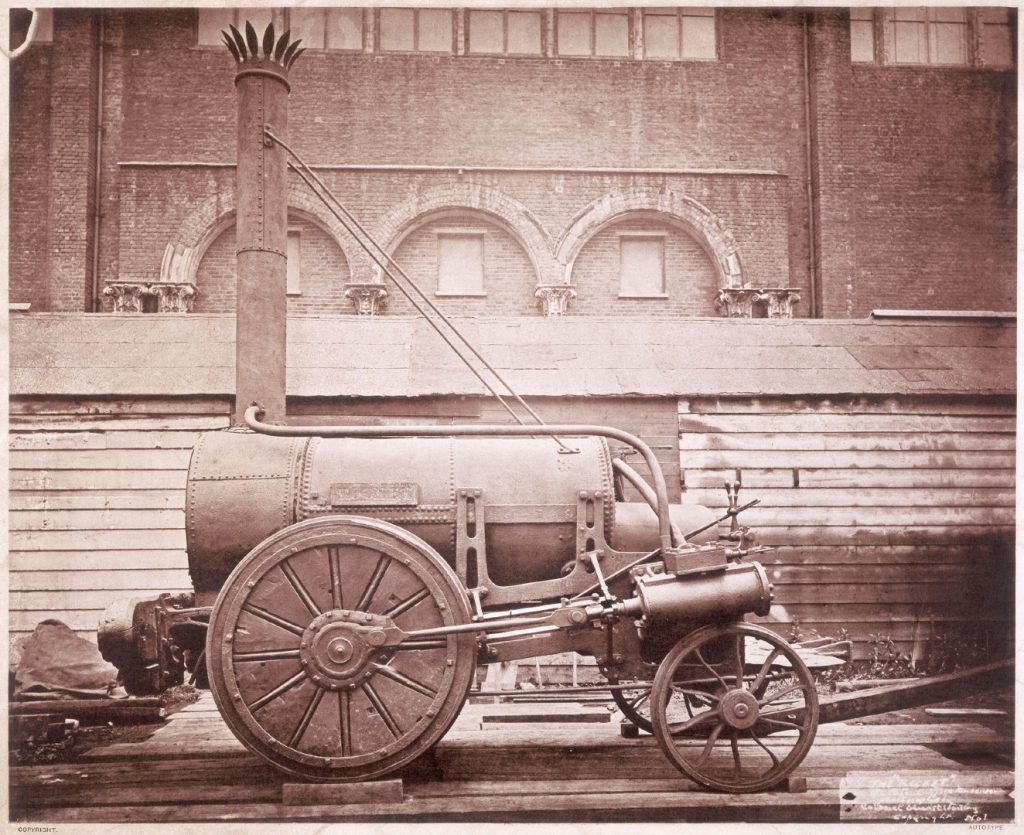
To separate the Loan exhibition from a trade show, prices of artefacts were not given, or were in some cases even removed, distinguishing the approach from that of the practically oriented engineer (Clercq, 2002c, p 19; Kirchner, pp 302–03), and showing the exhibition’s alignment with the endeavour of science. However, the Director of the South Kensington Museum did respond to a special German request, and a dedicated office was set up for providing catalogues of contemporary German material with prices, which led to many enquiries.
From the southern gallery, visitors were expected to progress through a narrow corridor to the second building, which held the smaller objects relating to laboratory science. There one could appreciate Galileo’s telescope, Lavoisier’s calorimeter and Joule’s apparatus. Remarkably, only one photograph of the exhibition itself is extant, showing part of this gallery (see Figure 3).
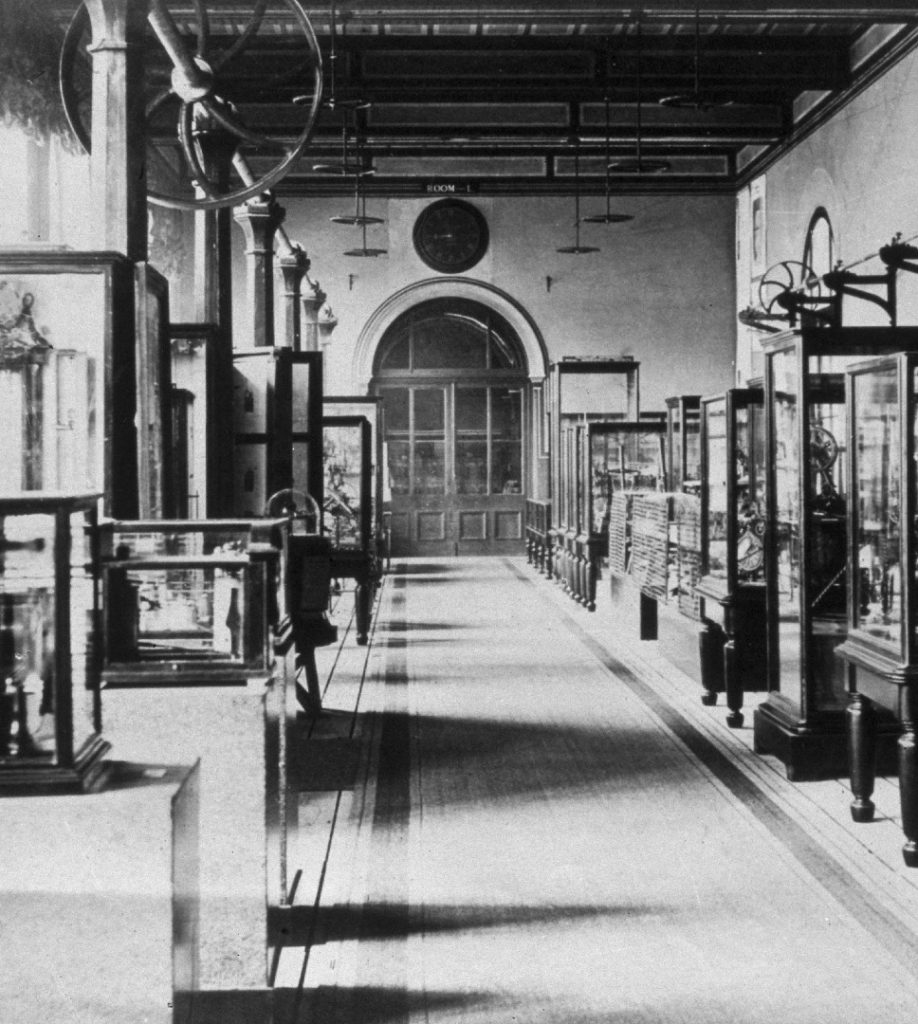
As part of the campaign to render the exhibit permanent, many of the objects were copied before their return after the exhibition closed in December 1876 (de Clercq, 2003, p 13). Several hundred objects were photographed, but three-dimensional electrotype copies were also made in an eerie anticipation of the modern practice of 3-D imaging. Again, this reflected a collaborative internationalist thrust. At the international exhibition in Paris in 1867, a convention signed by a dozen princes ordained that works of art should be reproduced systematically for international distribution in the ‘Convention for promoting universally Reproductions of Works of Art for the benefit of Museums of all countries’ (see Figure 4).

Twelve of the most important objects loaned to the exhibition from overseas were copied, some in multiple editions. These included Tycho Brahe’s quadrant, the Magdeburg hemispheres (with which the suction of a vacuum was vividly demonstrated in Germany during the early 17th century) (see Figure 5) and Lavoisier’s own calorimeter from Paris. The museum of the Conservatoire National des Arts et Métiers also offered to exchange reproductions as soon a permanent museum had been established in London.
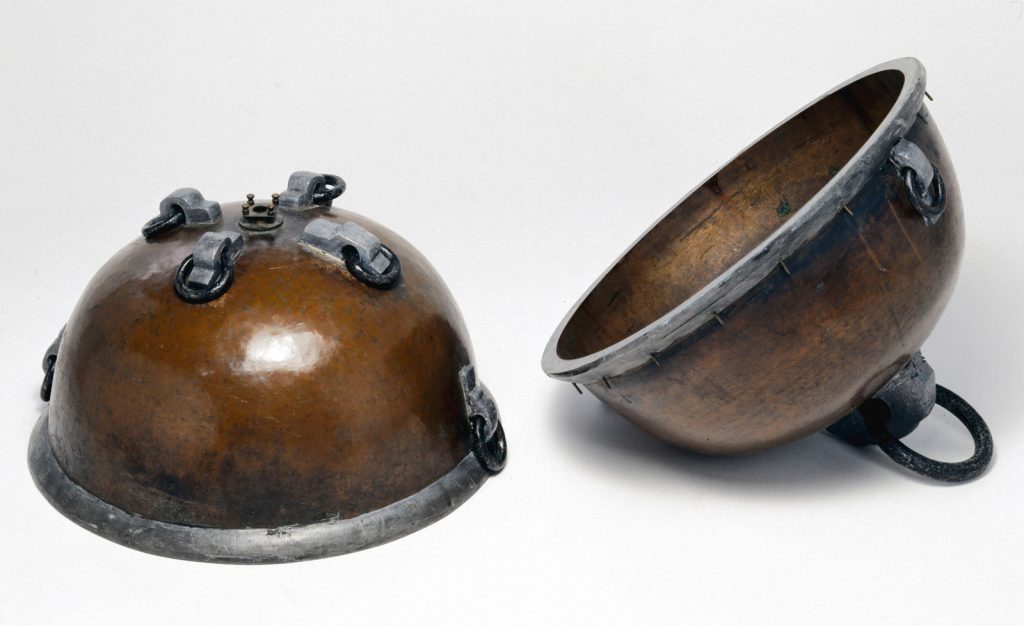
Thus the articulation of the narrative of an internationalist culture of science within the construction of the Loans exhibition was further fortified by the inclusion of artefacts from different countries, making it easy to overlook a nationalist agenda. The German translation of the catalogue and international acclaim for the exhibition highlight its success in expressing the values of new scientific professions. Nonetheless, there was nationalist competition at work too. Almost as soon as the Loans exhibition closed, the chemist Lyon Playfair, who had launched the technical education panic a decade earlier, raised his on-going programme of bolstering the nation through encouraging science education. This time he struck through his access to funds left over from the profitable 1851 Exhibition, looked after by a body of Commissioners (and still active in 2014). As a Commissioner himself, Playfair arranged an offer of £100,000 to the government to cover the cost of a building for a permanent collection (Scott, 1876). Several distinguished scientists scrabbled to follow up, publishing a memorial to the government, with 140 distinguished signatories. This stressed the ‘importance of establishing a museum of pure and applied science: that is to say a museum containing scientific apparatus, appliances and chemical products illustrating the history and latest developments of science’ and urging the assimilation of the Patent Office Museum (Museum of Science, 1876).
Despite its initial enthusiasm, the government proved reluctant to allocate money to a permanent museum. But the situation as it stood was not sustainable. Art needed more space in the South Kensington Museum and consequently the science departments were expelled from the main Museum building on the east side of Exhibition Road. Meanwhile, the Board of Trade was keen to close the Patent Office Museum. The Devonshire Commission report had provided a justification for an alternative model and the Loan exhibition had provided the vindication (Science and Art Department, 1883, lxx). So, in the end, selected Patent Office Museum objects were transferred to the South Kensington Museum, and the Museum’s Report for 1885 explained ‘that these examples will be amalgamated with the Science Collections of the Department, and will in future be known as the Science Museum’ (Science and Art Department, 1885, p 193).
Through the 1880s, battles had to be fought through a thicket of committees for the vision expressed by the Devonshire Commission report in 1874 to be realised. There was widely expressed scepticism that this was just another piece of ‘jobbery’ by scientists wishing to live off the state at a time when government funding of research was also being debated. A correspondent to The Times warned that a science museum might end up requiring ‘a well-paid army of curators’ (FRS, 1877; MacLeod). The attractiveness of exhibits was also widely doubted, particularly by the head of the Office of Works, Algernon Mitford (Bud, 2009).
This vocal challenge to the claims that science would both enlighten and strengthen the British worker was powerful and not restricted to the museum context. It was also being fought out in an enduring debate over the nature and desirability of technical education (Cardwell, 1957; see for instance Armstrong, 1888; and Playfair, 1888). At the same time, Lockyer was a constant campaigner for the permanent museum through personal lobbying and in the columns of Nature. He was also supported strongly by the distinguished Professor of Chemistry at Manchester, Henry Roscoe, who had succeeded Lyon Playfair as chief external witness in a sequence of enquiries through the 1880s. In 1889, for instance, Roscoe had to dispute, in a Parliamentary Committee, an MP’s assertion that the collections were merely ‘a quantity of old iron and worn-out models that ought to be consigned to the rubbish heap’ (Roscoe, 1906, pp 297–98).
In 1909, the separate standing of the Science Museum was confirmed when the Victoria and Albert Museum building was opened. Within months a ‘Historical Memorandum’, Science Museum series no 1, was published by the Board of Education (Cooper, 1909) describing its evolution, althoughonly a single paragraph was allocated to the foundation of the South Kensington Museum, whereas ten were allocated to the developments from the mid-1870s to the mid-1880s. Yet, progressively, as the separate museum was established, the rhetorical reference to the 1876 exhibition diminished. When the Royal Commission on Museums and Galleries published its interim report in 1928, the Museum’s foundation was pushed back to 1852, and in an extensive historical review the Loan exhibition was not mentioned (Royal Commission on National Museums and Galleries, 1928, p 18). This was not from ignorance. Sir Richard Glazebrook, long-time chairman of the Museum’s Advisory Committee was a Commissioner in 1928. In the battle of venerability with other museums, such as the National Maritime Museum in Britain and the Deutsches Museum in Germany, and in the competition to claim baptism by Prince Albert, the complexity of the Science Museum’s institutional origins had been obscured.
The concerns of the interwar years parallel the pressures of the 1870s and 1880s and show the continued power of the two narratives about science described in this article. The Final Report of the Royal Commission explored how in Germany ‘the modern spirit of interest in scientific progress’ had found expression in the Deutsches Museum, which was at the same time an instrument of instruction and a ‘symbol of national efficiency’ (Royal Commission on National Museums and Galleries, 1930, pp 48–9). This was expressed as both a model and a challenge to the British. The need and opportunity of responding to the twin narratives of national rise and potential decline on the one hand, and the rise of science as an international cultural force on the other, were the same as in 1876. Indeed, the 1928 report included a lengthy quotationfrom an 1884 report, which had highlighted the nation’s dependence on ‘practical applications of science’ (Royal Commission on National Museums and Galleries, 1928, pp 18-19).
These issues have persisted. At the end of the 1970s, a century after the holding of the Loan exhibition, two major temporary exhibitions were mounted at the Science Museum. The first, in 1976, was Science and Technology of Islam. The second, in 1980, was Challenge of the Chip, which responded to a government agenda to raise public understanding of micro-electronics. Thus we can argue that the Museum has continued to engage with the narratives of science as, on the one hand transcendental and an internationally shared public good, and on the other hand as a national weapon of industrial and economic supremacy.
Acknowledgments
This work has benefited from research conducted in the course of a fellowship awarded by the Arts and Humanities Research Council number AH/I027177/1 and support from the Science Museum. I am grateful for library access to the rich resources of UCL permitted as a privileged Visiting Senior Research Fellow in the Department of Science and Technology Studies. The paper has benefited from conversations over the years with my colleagues John Liffen and Peter Morris.

